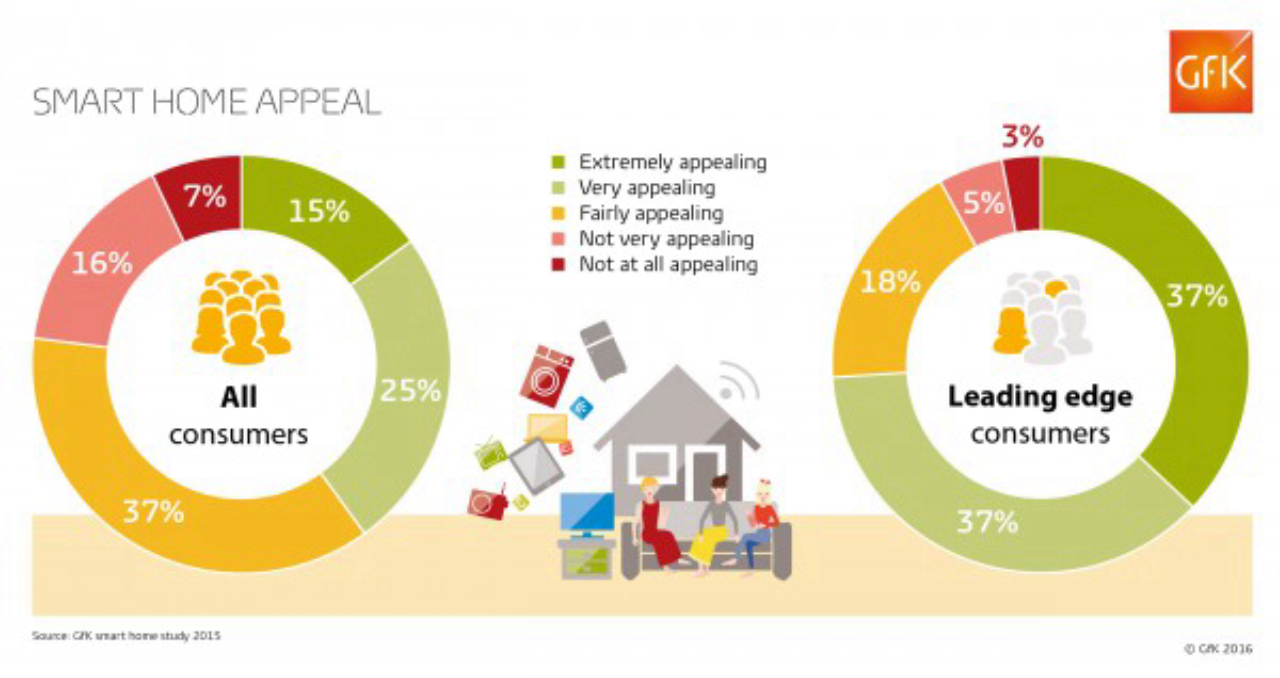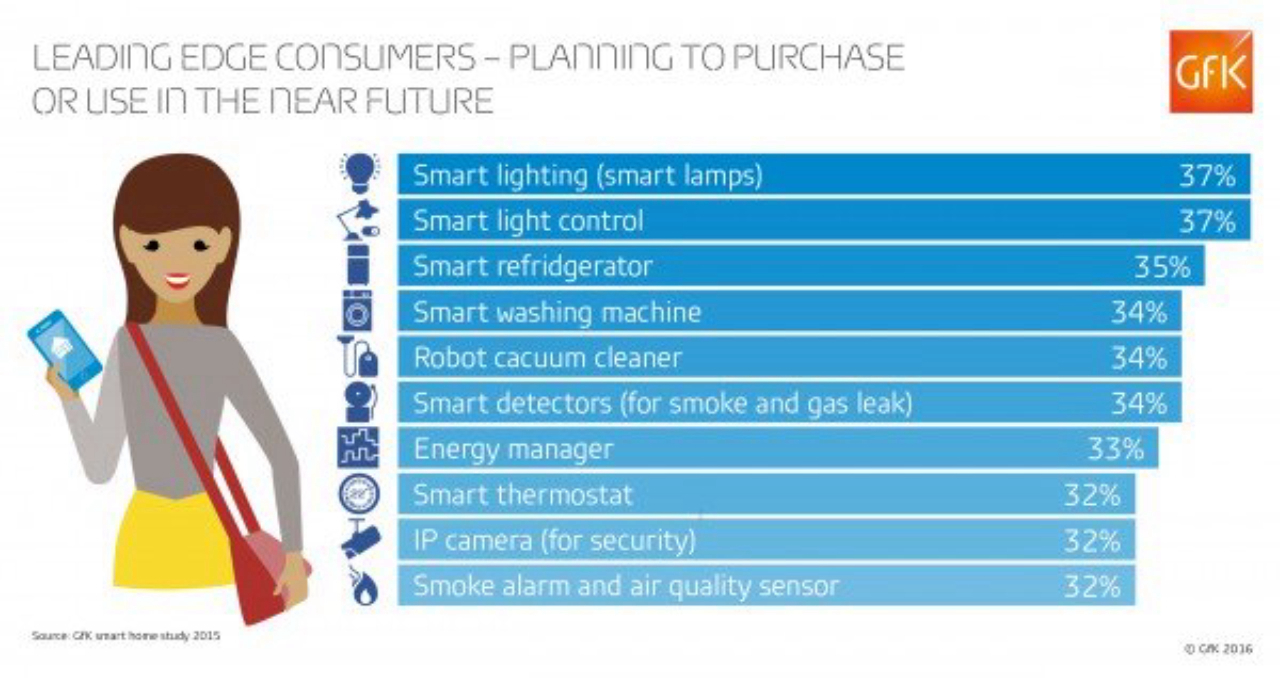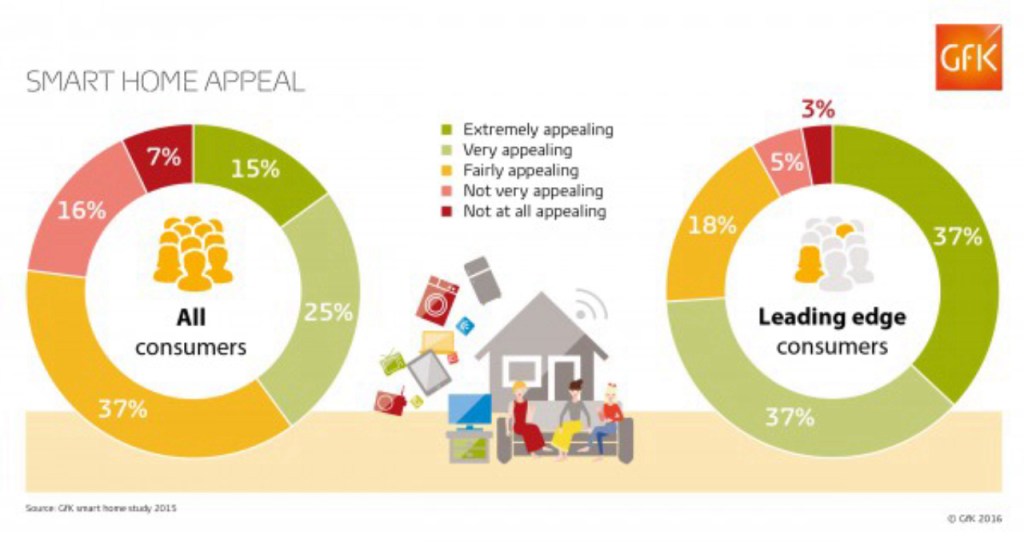The smart home is already a burgeoning market, with players from across sectors looking to get in on the action, but what of its future? We recently carried out a global study of 7,000 consumers in seven markets – Brazil, China, Germany, Japan, South Korea, the UK and the US – to assess consumer attitudes towards the smart home. 17% of these were Leading Edge Consumers (LECs), those who are quick to adopt new technology, savvy about its use and potential, and influence others. Where LECs lead, the mass market usually follows. But in which direction is this group of early adopters heading?
Predicting the future with Leading Edge Consumers (LECs)
Nearly three quarters of LECs find the smart home extremely/very appealing and relevant to their daily lives compared to 40% of other consumers.

Three quarters expect it to impact their lives ahead of other technology trends versus 50% of consumers globally. Evidently, LECs recognize the potential benefits a fully connected home could offer them. In fact, more than 50% of them already own a smart home device compared to one quarter of consumers globally. LECs are also more likely to own in excess of one device, with more than two in five owning more than three. Satisfaction with the smart devices is also strong.
The ten smart home products embraced most by LECs are those where smart functionality has been added to everyday, domestic devices – with remote control/monitoring and self-maintenance being the two key features that enhance these domestic items.

When it comes to operating their devices, LECs simply expect them to be able to communicate with each other, regardless of whether they are made by different vendors, and to be controllable via a single app. In fact, only a few do not have this expectation (12% vs. 34% of other consumers).
Validating intention to purchase
58% of consumers globally claim they will purchase a smart home product in the next two years, but our validation approach puts this figure at 14%. We know that respondents’ claimed intention is higher than what is realized in practice, which is why validation is so important for providing a realistic picture of future success.
40% of our validated consumers are Leading Edge Consumers, more than double the number found at a total level, highlighting the importance of early adopters to this market.
A bright, connected future awaits
Using this group of early adopters as an indicator of mass take-up, the future looks positive for the smart home. But the reality is that the smart home appeals to this group because it has greater knowledge of what it is and its potential impact. LECs’ passion for the category goes hand in hand with this familiarity and understanding.
When looking at potential barriers to the appeal of the smart home concept, we see that knowledge and relevance are key differentiators. For other consumers to boldly go where LECs are leading, players in the market are going to need to coherently and consistently communicate exactly how the smart home can connect and enhance their everyday lives to realize its full potential.
Please email me to share your thoughts at ranjiv.dale@gfk.com or follow me on Twitter @rdale18.
Learn more about the Smart Home or sign-up for a free consultation with our experts to learn more about the Smart Home.
Tech Trends 2016 – Smart Home
CES 2016 – GfK Smart Home Presentation




